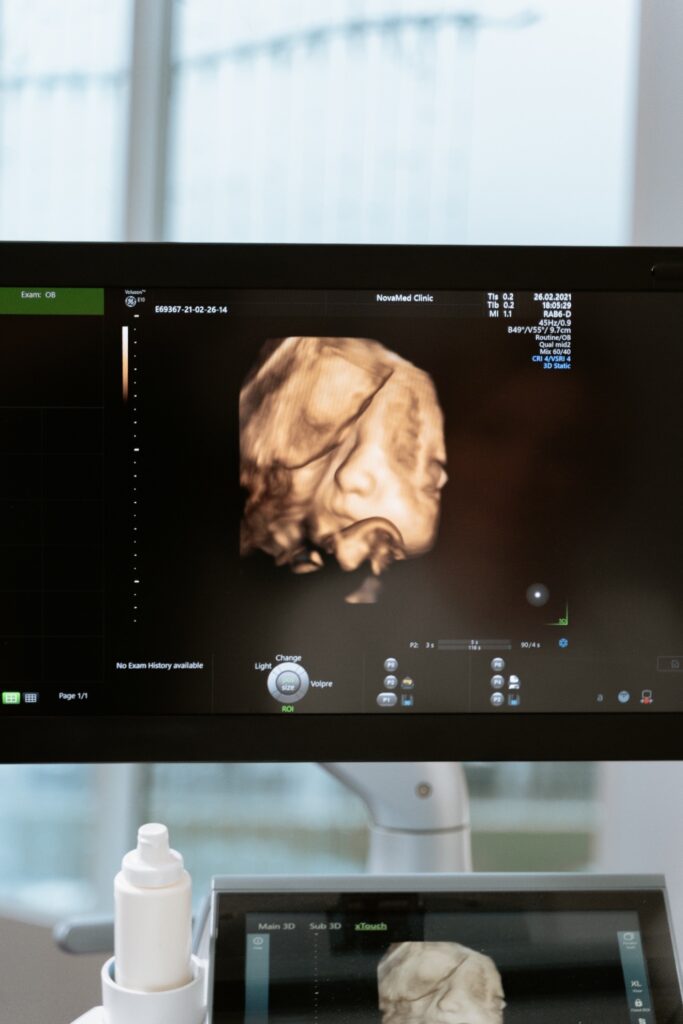Jane’s Revenge
During May 2nd, 2022, an anonymous source leaked a draft of the U.S. Supreme Court’s preliminary decision in an abortion-related case, Dobbs v. Jackson Women’s Health Organization. Following the startling disclosure, which indicated that the justices intended to overturn Roe v. Wade, pro-life churches and crisis pregnancy centers (CPCs) experienced a backlash. For example, on May 8th, Mother’s Day, protesters vandalized Birthright, a crisis pregnancy center in Frederick, Maryland. They spray painted the words, “Defend Roe,” between the building’s two front windows, and scrawled the following profanity next to the front door: “f*** fake clinics.” That same morning, in Madison, Wisconsin, arsonists firebombed the offices of another CPC, Wisconsin Family Action. Under cover of darkness, the assailants tossed two Molotov cocktails into the structure’s interior. They also painted a menacing graffiti message outside: ‘If abortions aren’t safe, then you aren’t either.”

Shortly thereafter, in a manifesto sent to an anonymous blogging site, an underground organization named Jane’s Revenge took responsibility for the deeds described above. Their “First Communique” complained that women “had been shot, bombed, and forced into childbirth without consent,” then demanded “the disbanding of all anti-choice establishments, fake clinics, and violent anti-choice groups within the next thirty days.” And after warning that Jane’s Revenge was now “thin on patience and mercy for those who seek to strip us of what little autonomy we have left,” meaning opponents of abortion, they promised “increasingly extreme tactics to maintain freedom over our own bodies.”
A series of subsequent events in the Pacific Northwest proved Jane’s Revenge absolutely serious. During the weekend of May 20-22, four pro-life places of worship in Olympia, Washington—all closely affiliated with CPCs—experienced acts of desecration. In a May 23rd blog post sent to an anarchist website, the “Bo Brown Cell” of Jane’s Revenge identified themselves as the perpetrators. “Last night we vandalized four anti-abortion churches in Olympia. A Mormon church, Calvary Church, and St. Michael’s Catholic Church all received facelifts in the early hours of Sunday morning. We dumped red paint over the entryways and left messages of ‘if abortions aren’t safe, neither are you,’ ‘abolish the Church,’ and ‘God loves abortions.’” Demonstrating their obvious anti-religious zeal, the Bo Brown Cell’s e-mail lambasted the damaged churches as “patriarchal sex abuse cults,” guilty of enforcing the “violence of forced birth,” and opposing “bodily autonomy.” Overall, according to the Family Research Council (FRC), CPCs and their allies experienced 50 violent attacks nationwide between May 3 and June 16, 2022.
Later in this blog, I will demonstrate that disgust for these pro-life places permeates even the more mainstream wing of the pro-choice movement, and then explain exactly why this sentiment runs so deep. But first, readers need to know something about the CPC movement’s roots.
Origins
The first CPC or pregnancy resource center, can be traced back to Toronto, Canada. Here, in 1968, disturbed by that country’s increasingly permissive abortion laws, Louise Summerhill, a mother of seven, established Birthright in Canada. This new, cross-denominational entity adopted the following foundational principle: “It is the right of every pregnant woman to give birth . . . and the right of every child to be born.” As part of its faith-based responsibility to provide “love and compassionate support to women faced with difficulties regarding the life of their unborn baby,” Birthright’s very first clinic offered an array of free services, including pregnancy testing, counseling, housing, medical care, adoption referrals, diapers, and formula.
This Canadian model soon migrated south to the United States, a nation simultaneously witnessing the demise of laws against abortion. Thus, in 1971, at Toledo, Ohio, Alternatives to Abortion (now Heartbeat International), opened its first CPC. By the mid-1990s, two other like-minded organizations could be found all across the nation: Care Net and the National Institute of Family and Life Advocates (NIFLA). How many of these pregnancy resource centers/CPCs can currently be found in the USA? A 2018 study from the Charlotte Lozier Institute—which counted not just the “Big Three” mentioned previously, but also the many smaller affiliates—uncovered approximately, 2,750 CPCs, serving 2 million clients per year. And what services might these twenty-first century pro-life bastions offer? The long list includes not just pregnancy testing, but STD testing, parenting classes, abstinence-based sex education, diapers, baby clothes, car seats, and ultrasound examinations.
Of course, in addition to offering up material assistance, the entire movement has a profoundly religious motivation. In the words of Care Net, “we don’t stop at saving the life of unborn children . . . we work to ensure that they—and their mothers and fathers—can experience the abundant life Christ brings. We do this by not just being pro-life, but by also being pro-motherhood, pro-fatherhood, pro-marriage, and pro-gospel.”
Some of my readers may deem these people of faith praiseworthy for such charitable practices, but not the USA’s pro-choice establishment. Their response to CPCs’ efforts has been profoundly negative, as we shall see in the next few paragraphs.
Google for Me, But Not Thee.
In April 2014, under tremendous pressure from Ilyse Hogue, the president of abortion rights heavyweight, NARAL Pro-Choice America, tech giant Google began removing on-line ads created by pregnancy resource centers. What warranted such banishment? The CPC movement had employed a common tactic in e-commerce: positioning your own product in a keyword search for a competitor’s services. Thus, when a woman typed “abortion” or “abortion services” during a Google search, results might include some of their pro-life facilities, not just abortion clinics. Nothing illegal had taken place, merely a standard variety of search engine optimization (SEO). Nonetheless, by the close of 2014, Google had taken down two-thirds of the “offending” CPC ads. That statistic, however, did not fully satisfy pro-choice forces. So, in June 2019, Google enacted an even more restrictive policy. From that time onwards, any ads mentioning abortion had to be accompanied by a visual disclosure with two possible headings: “provides abortions” or “does not provide abortions.” Not surprisingly, Google had crafted its new strategy in collaboration with Plan C, a major provider of abortion pills. Revealing that group’s ultimate intentions, a Plan C representative remarked, “our goal is to try to get not only the ads, but also all of the content created by CPCs taken down.”
California
Abortion rights activists have also been zealous about using governmental power to silence pregnancy resource centers. Case in point: California. Here, in October 2015, working hand-in-hand with NARAL California’s leadership, the state legislature passed AB 775, the “Freedom, Accountability, Comprehensive Care and Transparency ACT (FACT).” This legislation compelled all CPCs that had been licensed as medical clinics to post a state-mandated notice “in a conspicuous place” within their offices. Here is the exact wording: “California has public programs that provide immediate free or low-cost access to comprehensive family planning services (including all FDA approved methods of contraception), pregnancy care and abortion for eligible women. To determine whether you qualify, contact the county social services office at [insert the phone number].” Summing up this rabidly pro-choice notification’s impact on CPCs, Bishop Timothy Dolan warned that, “it force[s] them to provide free advertising for the violent act of abortion, in direct violation of their pro-life convictions and the First Amendment.” Similarly, a writer at the Libertarian publication, Reason.org, quipped, “Democrats wouldn’t take kindly to a bill requiring abortion clinics post info about adoption and the joys of motherhood.”
Suppression in New York
A similar alliance between abortion advocates and government exists in New York. For example, in March 2011, the New York City Council passed Local Law 017. It required pregnancy resource centers “to post signs in their facilities and on their websites, disclosing to clients . . . whether they provide or refer for pregnancy care, emergency contraception, or abortion.” Who had lobbied for and drawn up this bill? Another pro-choice powerhouse: the Center for Reproductive Rights. Then in 2016, the city passed an additional ordinance requiring that the previous disclosure be “posted at the entrance and in any area where clients received services,” plus “every page of their website, even posts on social media, and in their advertisements,” in both “English and Spanish.”
Moving forward, in June 2022, New York State’s Democratic governor, Kathy Hochul, signed the “Pregnancy Center Resource Bill” into law. This creates a nine-person taskforce made up of specialists in “reproductive health,” aka, pro-choice activists. They will be empowered to demand vast amounts of data from CPCs regarding their donors, clients, and employees. The rationale for such burdensome intrusion? To determine if CPCs have been providing women with “misleading information,” causing them to either delay an abortion until the later stages of pregnancy, or until no option remained except birth. Considering that the bill’s authors could not provide one instance of a pregnancy resource center compelling a woman who wanted an abortion to desist, they seem to have an ulterior motive: harassment.
Ultrasound
Clearly, opponents of CPCs, whether the activists in Jane’s Revenge, or giant abortion providers and their allies in government, would like nothing better than to shut down these facilities. If asked why, they invariably reply that the opposition has been proven guilty of “deception,” “spreading misinformation,” and manipulating women,” to name some favorite descriptors. I prefer an alternative explanation for their mentality: CPCs have unleashed a powerful weapon that threatens to undercut the pro-choice community’s basic presuppositions about reality, fetal ultrasound.

In this now iconic procedure, a pregnant woman lies on an examination table. Next, a technician applies gel to her abdomen and waves a wand-like transducer over the area. Ultrasound waves are then transmitted through the gel into the womb, and “bounce” back to provide a visual image or sonograph. The standard 2-D version of pregnancy ultrasound creates a flat, black and white picture that reveals the fetus’s facial outline, and beating heart. But with the newer 3-D version of this technology, one can see the baby’s skin, hands and feet, along with an angular, more detailed view of the face. Still, 4-D ultrasound—which generates “a moving video of the fetus”—goes even further. According to one Florida-based provider, it allows parents “to see the actual face of your unborn child, with every facial detail, as well as the activities that your baby is doing inside—from sleeping and thumb sucking to kicking and laughing,” all of which “allows you to start bonding from the very beginning.”
More on Ultrasound
Since the mid-1990s, CPCs have been aggressive in purchasing ultrasound machinery and showing its startling sonographs to women contemplating abortion. The “Big Three,” as I style them, performed 230,000 ultrasounds in their offices during 2010, a number that had reached a whopping 486,000, by 2017, according to the Charlotte Lozier Institute, Today, six out of 10 pregnancy resource centers possess at least one ultrasound device. Moreover, these three major organizations have joined with other pro-life groups, like ICU Mobile and Save the Storks, to create a fleet of around 120 mobile medical units equipped with the latest 3-D and 4-D devices. Roaming the nation, their mission consists of “offering the hope and purpose only found in the Gospel,” while “saving the lives of the unborn using ultrasound technology and advocacy,” to quote ICU Mobile.
For pro-life advocates, the results of this intensive campaign have been spectacular. It appears that merely showing a 3-D and 4-D sonograms of the unborn child serves to a pregnant individual dissuades them from undergoing an abortion. Indeed, as a Southern Baptist commentary explains: “Ultrasound technology is proving to be the most convincing piece of evidence the pro-life community has to offer young women who think their unborn children aren’t babies.” Confirming that observation, NIFLA reports that after looking at an ultrasound inside one of their centers, 78% of women inclined to abortion experienced a change of heart. Likewise. the United States Conference of Catholic Bishops (USCCB) estimates that around 90% of women leaning towards an abortion decide to keep their unborn child after seeing its facial features via ultrasound.
A Clash of Worldviews
At this point, some readers will probably exclaim, “yes, I see why CPCs’ embrace of ultrasound frustrates massive money-making corporations like NARAL and Planned Parenthood: it is costing them customers!” Yes. But there is an even stronger explanation for this fury: ultrasound imagery threatens to overturn the pro-choice worldview, while simultaneously confirming their opponents’ view of reality. To understand my claim, we must briefly examine the two sides’ respective philosophical roots.
First, the CPC movement upholds the pro-life theological principles of what I call “Traditional Christianity.” From that 2,000-year-old perspective, the entire cosmos is the “handiwork of God.” He created the human race “in His own image,” making our species special, and wants us to “be fruitful and multiply,” but only within the context of a lifelong monogamous marriage. The Traditionalist viewpoint also condemns pre- or extra-marital intercourse as sinful, and insists human life ought to be cherished from conception until natural death.
In contrast, the pro-choice/abortion rights movement has always been proudly secular. Indeed, many of its icons and advocates have been secular humanists and/or atheists, including Margaret Sanger—founder of Planned Parenthood— Bernard Nathanson, Henry Morgentaler, and Gloria Feldt. From their non-theistic viewpoint, nature shows no evidence of a divine being or plan; therefore, humanity has no God-given purpose. Instead, we should seek pleasure and individual fulfillment here on earth, including via sexual activity, which can be enjoyed for its own sake, rather than as a vehicle for procreation. And this quest for carnal delight need not wait for marriage or be restricted within its bounds. As for the fetus, it constitutes just “a clump of cells,” nothing holy, whose right to live is less important than the pregnant woman’s wishes, as in the celebrated mantra, “my body, my choice.”
Doritos Cause a Commotion
Obviously, the sight of a developing baby smiling, yawning, even waving its fingers and toes, plays havoc with this notion that a fetus is just a valueless blob inhabiting its female host. Rather than confront the possibility of being wrong on such a momentous issue, the pro-choice movement has decided to stifle dissent, thereby avoiding the need to reevaluate its own ideology. Case in point: a piece of advertising for Doritos chips during the NFL’s 2016 Super Bowl. “The 30-second commercial showed a father and mother in a doctor’s office watching the ultrasound of their unborn baby boy. As the father snacks on a bag of chips, he notices that his unborn son is reaching out of the womb, grabbing for the snack. As the father moves the chip near his wife’s stomach, the baby reaches out again.” Responding to this commercial, pro-choice actress Mindy Kaling called the message, “chilling,” and NARAL lambasted it for employing the “anti-choice tactic of humanizing fetuses.” Not surprisingly, when one recalls their previous treatment of pregnancy resource centers, NARAL also proposed an outright boycott of Doritos, under the Twitter hashtag, #notbuyingit.

Final Thoughts
The reason for this hypersensitive response to a rather silly ad ought to be crystal clear: if a fetus/unborn child does belong to the human race—which ultrasounds suggest—then the idea that, “it is just an irrelevant clump of cells,” has to be abandoned. But if that specific domino falls, then the other components of secular pro-choice ideology also have to be reappraised. Perhaps exercising individual autonomy and attaining pleasure, particularly through sexual experimentation, do not constitute the highest goods attainable. Perhaps, instead, human life at all stages, including that of the fetus, is sacred and part of a cosmic plan involving marriage and procreation, as Traditional Christianity has long maintained. Rather than face this earth-shattering possibility, however, pro-choice activists have decided upon a different strategy: suppression of the opposing viewpoint. Indeed, the behavior of abortion enthusiasts described throughout this blog—be it acts of vandalism, censorship of search engines, or government-sponsored harassment—has a clear objective: destroying the entire Crisis Pregnancy Centers movement to avoid addressing its religious claims.

